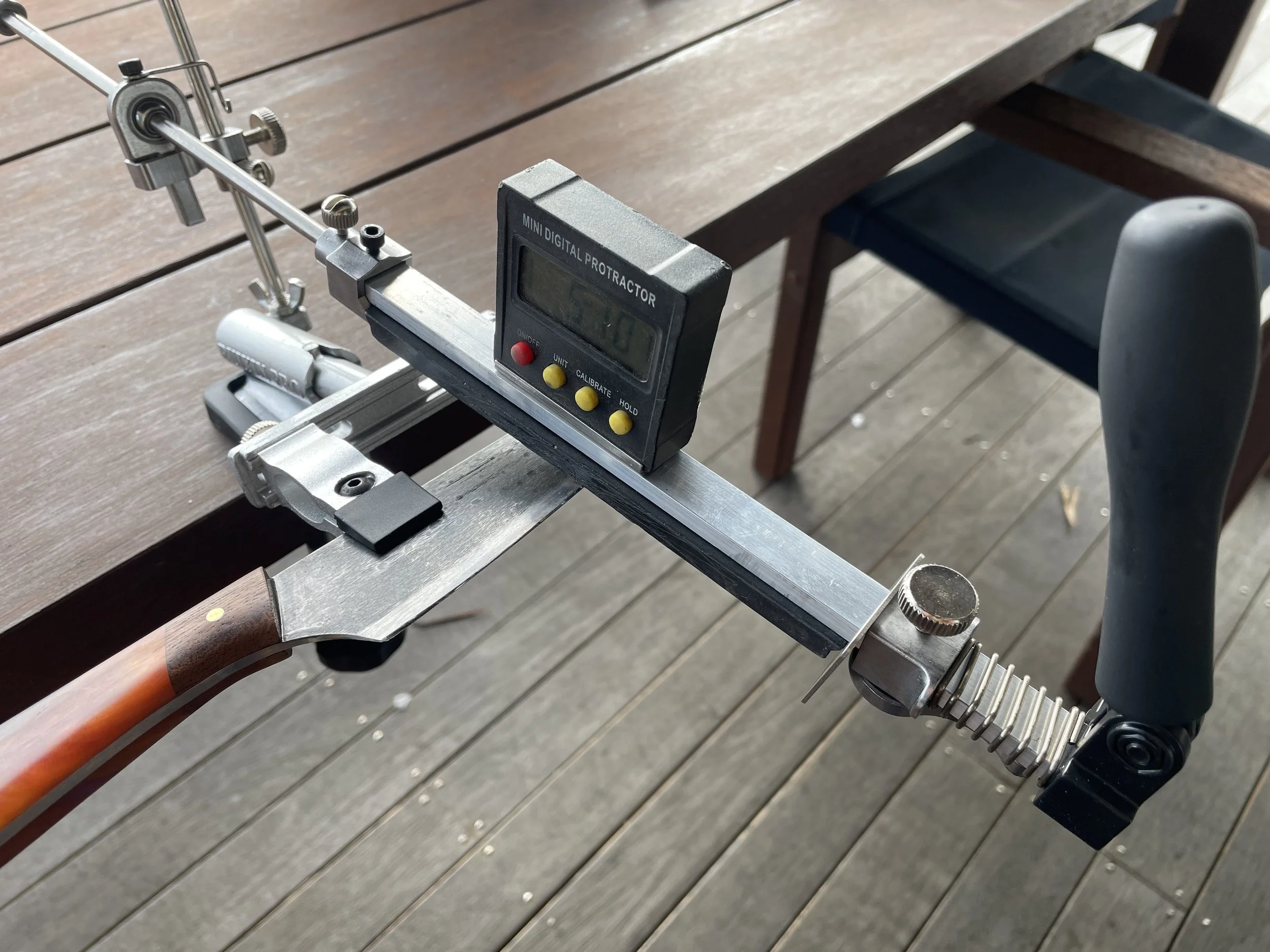The Benefits of Carbon Steel Knives, How Care for Them, and How to Restore Them
Carbon Steel in Knife-Making
Carbon steel was once the standard material used in knife-making, and many professional chefs still prefer it today for its exceptional performance, ease of sharpening, and excellent edge retention.
The trade-off is that carbon steel is more prone to rust if left wet, and it naturally develops a patina over time after contact with meat and vegetables. While rust is never desirable, a patina can add character to the knife and is valued by many users—though it’s not for everyone.
At Game Valley Knives, we mostly use 1084 high-carbon steel which is may just be the best steel ever. Unfortunately it is not available in NZ so we source it from Germany and the USA. 1084 is a reliable choice for heat treatment, meaning we consistently produce high-quality blades. It’s also very easy to sharpen and holds an edge much longer than most stainless steel knives. Trust me—I've sharpened hundreds of different knives in a market setting, and I prefer sharpening carbon steel every time.
Another benefit of 1084 is that it doesn’t chip easily. Some ultra-hard steels can hold an edge for an incredibly long time, but they chip easily and when they do chip, the damage is often severe. I’ve seen many knives end up looking like bread knives, with multiple chips along the edge. In those cases, I often have to reshape the entire blade.
On the subject of chipped blades, I don’t recommend those old metal pull through sharpeners.
Metal pull through sharpener
Knife Care
To keep a carbon steel knife in good condition, always wash and dry it after use and store dry. Wet sheaths are something to be aware of for the outdoorsman. Some people like to oil them using cooking oils for kitchen knives and WD40/CRC for outdoors knives, especially if being stored for a long period of time, however it is not essential to oil them for everyday use.
It is best to store a knife in a block or on a magnetic strip, as opposed to being loose in a drawer. This is important - never place your knife in a dishwasher. Dishwashers damage the blades and the handles.
Click here to find out how to sharpen carbon steel knives.
Knife Sharpening
Knife Restoration
Blades & Tangs
Carbon steel blades that have developed surface rust can be revived with a very fine 2000 grit sandpaper. It will be extremely hard to get the blade looking like new… best to think of it as retaining character from experiences.
Knife blades with a polished finish (e.g. Game Valley Outdoors Knives) will benefit with fine sandpaper followed by a good metal polish e.g. AutoSol. A metal polish is good at removing the patina from a blade and making the blade shine bright again.
Handles
Most Game Valley Knives handles have been treated with Danish Oil, left to dry and then treated with Coconut Oil. Wooden handles mostly benefit from this treatment, however, it is also applicable, to a lesser degree, to synthetic handles.
Periodically clean the handle with water and detergent. When dry, rub in some Coconut Oil.
Enjoy your knives!



